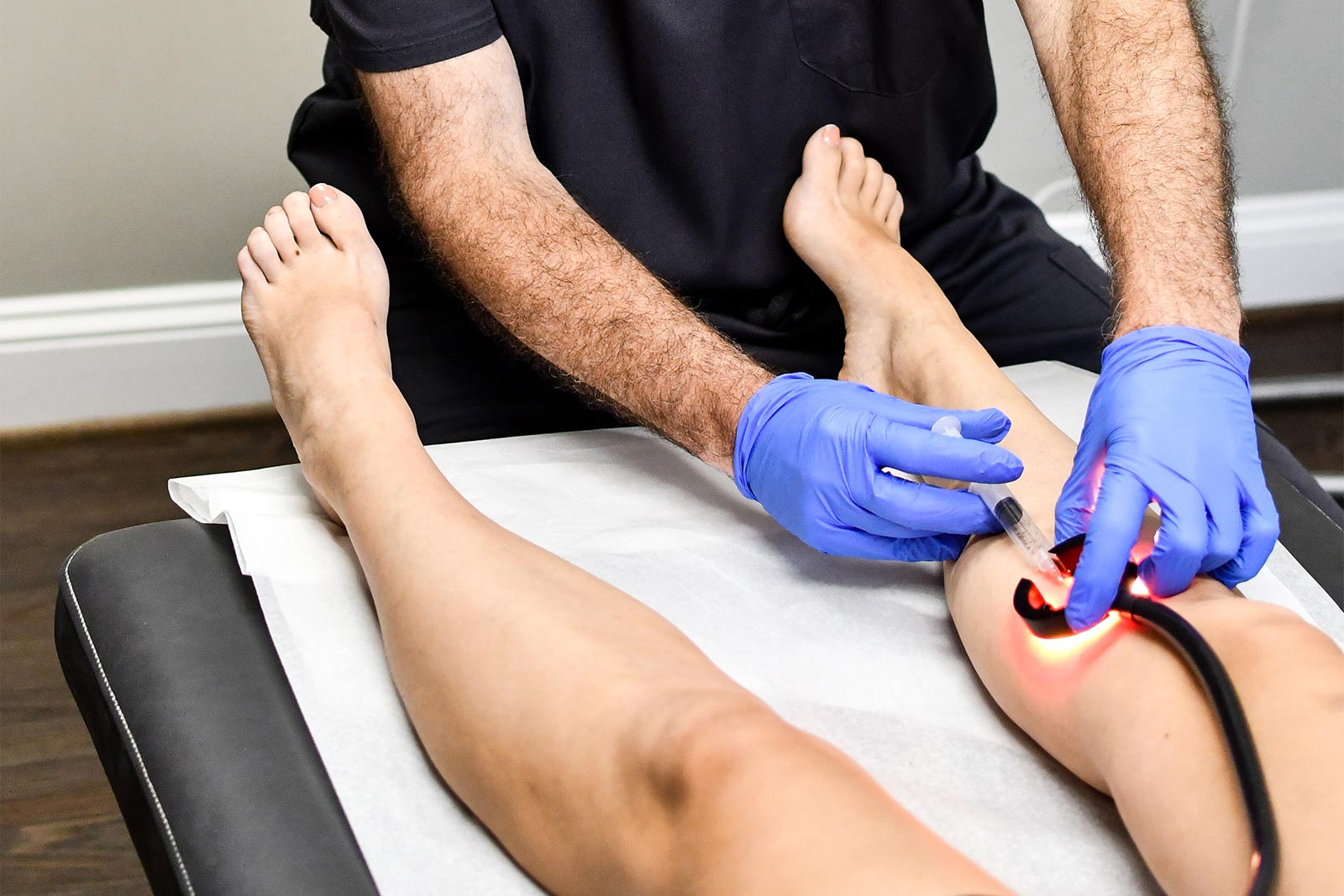Vein Treatments Radiofrequency Ablation (RFA) Treatment

Endovenous radiofrequency ablation, also known as RFA, is a treatment for varicose veins in the legs, a condition that affects a large number of adults. This procedure uses heat to close off the larger superficial veins, those closer to the surface of the skin. This includes the great, small and accessory saphenous veins.
The procedure is less invasive than other varicose vein treatments such as vein stripping, and requires only a tiny skin puncture. Radiofrequency ablation takes about 30 minutes per leg. The physicians at Carolina Vein Care and Aesthetics perform it in the office using local anesthesia.
Endovenous radiofrequency ablation may also be used alongside other procedures such as sclerotherapy and phlebectomy for treating the smaller varicose veins in the legs.
How is endovenous radiofrequency ablation performed?
The general procedure for treating varicose veins using endovenous radiofrequency ablation follows these steps:
- Before the procedure, ultrasound will be used to locate the vein, and the skin will be marked where a small puncture (incision) will be made to access the vein. This is often just above or below the knee.
- The skin of the leg is sterilized to reduce the risk of infection. A superficial local anesthetic is applied to the skin around the knee so you don’t feel pain when your physician makes the small incision.
- Once the skin is numb, your physician will make a tiny incision in the skin at the marked location. Using ultrasound as a guide, your physician will then insert a small tube (catheter) into the vein to be treated.
- A local anesthetic is injected into the tissues around the vein, and along the entire length of the vein. This keeps you from feeling pain during the procedure. The anesthetic also compresses the vein and prevents heat created by the radiofrequency device from moving too far beyond the vein.
- When the radiofrequency device is turned on, it heats and closes the vein from the inside. The vein is treated in segments, as the catheter is pulled slowly out of the vein.
- When the entire length of the vein has been treated, the catheter is removed. Your physician will use ultrasound again to make sure the treated vein was closed properly.
- The collapsed vein will close and form scar tissue. Over time the vein will fade away. When this happens, blood will naturally flow to other healthier veins in the leg.
What is the recovery like after RFA treatment?
For faster recovery after endovenous radiofrequency ablation, follow your physician’s instructions. These general guidelines will let you know what to expect:
- You will be able to return to your normal job activities within a couple days. However, if your job involves standing or heavy lifting, you may need more time off.
- You will be able to resume many of your normal activities on the same day of the procedure.
- On the day of the procedure, walk normally, and at least every hour until bedtime. After that, continue walking normally and daily for at least 15 to 30 minutes.
- Avoid sitting or standing for a long time, and elevate your legs while sitting.
- Avoid strenuous exercise and heavy lifting for one week.
- Wear compression stockings or bandages all the time for the first 24 hours, and then during the day for the next week until your follow up with your physician.
How do I know if endovenous radiofrequency ablation is the best treatment for me?
If you are considering treatment for your varicose veins, a vein specialist can help you decide if endovenous radiofrequency ablation is the right treatment for you. Sometimes this procedure is used alongside other vein procedures to treat both the large and smaller superficial veins of the leg.


